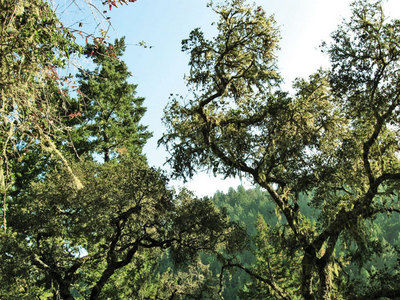
Recent rainfall might have you thinking that El Niño conditions are indeed strengthening — as the National Oceanic and Atmospheric Association has predicted — and that this will be a wet winter. California does not always see an increase in precipitation during El Niño years, but we can always hope and be prepared.
Here’s why. Every two to seven years, the trade winds over the warm equatorial waters of the Pacific Ocean slacken, or sometimes even reverse direction, and warmer-than-normal water accumulates along the equator in the central and eastern Pacific. This warming is called El Niño, because its effects are greatest in the winter, and they often disrupt fishing along the South American coast around Christmas.
Equatorial water is averaging 1 degree warmer so far this fall, and it should continue to warm. If it averages 2½ degrees warmer, that’s a moderate El Niño. If it goes higher, it would be considered a strong El Niño.
During major El Niño winters in 1997-98 and 1982-83, Pacific waters were nearly 5 degrees warmer than normal. The winter of 1997 brought nearly 90 inches of rain to Boulder Creek, and in 1982, we had 111 inches. It is interesting to note, however, that the strong El Niño of 1991 only dropped 46 inches on our area.
The El Niño now under way doesn’t guarantee our area will receive drenching winter rains, but the stronger the condition and the warmer the water, the greater the likelihood becomes.
If you have oaks or tanoak trees on your property, a wet El Niño winter makes conditions perfect for the spread of Sudden Oak Death. The pathogen that causes this disease thrives and spreads in moist, mild climates. There is no known cure for SOD — the only way to protect susceptible oaks and tanoaks is preventative treatment before conditions for infection are optimal.
The treatment approved by the state of California against phytophthora ramorum infection is Agri-Fos, a phosphonate compound. It can help protect trees from getting infected and may suppress disease progression in very early infections. Sprayed on the trunk or injected into the tree, it takes three to six weeks to be assimilated and become effective.
I have not found a local source for Agri-Fos, but you can buy it directly through the company. There is a link on the www.suddenoakdeath.org Web site.
To arm trees with as much resistance as possible, treatments must be applied in the fall and again in the spring. A free training session will be given by the California Oak Mortality Task Force in Berkeley on Nov. 4 and again Dec. 9. This training session, as well as information on the SOD Web site will provide information about how to select candidate trees for treatment and proper treatment applications.
We have seen the effects of SOD on the oak trees in our own area. Since the mid-1990s, more than 1 million oak and tanoak trees have died throughout California.
Laboratory testing is the only way to confirm this disease. You cannot diagnose symptoms solely by eye, as many diseases look similar. You can view photos at the Web site to compare symptoms with those on your oak or tanoak trees.
Look at nearby California bay laurels, rhododendrons or camellia plants with spots on their leaves, as this could be correlated. If you suspect you have infected trees, you can get the leaves tested at our local Ag Extension in Watsonville.
Preventative treatment is the key to slow the spread of this pathogen and protect high-value trees at risk of infection.
Generally, you should treat oak trees within 150 feet of other infected trees or plants. You may want to treat healthy oaks or tanoaks if they are surrounded by healthy bay laurels and there are known infections within 1,000 feet.
• Jan Nelson, a California certified nursery professional at Plant Works in Ben Lomond, will answer questions about gardening in the Santa Cruz Mountains. E-mail her at ja******@*ol.com.











